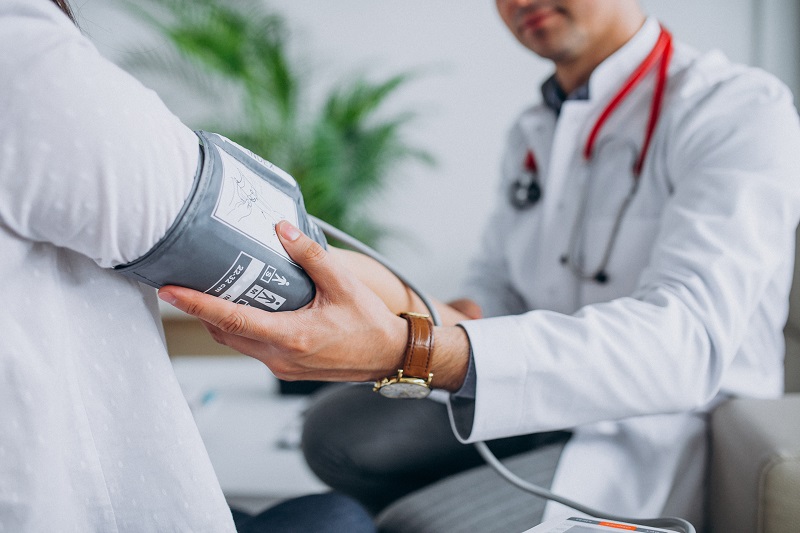
Types of Dyslipidemia and its management
Dyslipidemia, in simple terms, is a disorder of cholesterol, broadly high bad Cholesterol (LDL and Triglycerides ) , low good cholesterol (HDL) or a combination. It is attributed to high levels of lipids in the blood, also known as hyperlipidemia and high levels of lipoproteins in the blood, also called the hyperlipoproteinemia. The Dyslipidemia treatment targets to reduce and maintain the cholesterol level in blood within the prescribed limit to reduce long term complications most vital of them being atherosclerotic cardiac vascular complications. Dyslipidemia is one of the major risk factors that causes cardiovascular diseases, ischemic heart diseases, brain stroke which are believed to account for one-third of the fatalities around the world. Dyslipidemia is also associated with Diabetes , obesity and a component of metabolic syndrome, which is a constellation of obesity ,insulin resistance, impaired glucose tolerance or overt Diabetes, hypertension, and high cholesterol.
Types of Hypercholesterolemia
It is classified into two categories. It is important to identify the types for a more effective management.
- Primary hypercholesterolemia
It is also called familial hypercholesterolemia. It is caused as a result of genetic defects. The genetic mutation changes the processing of cholesterol in the body. This mutation prevents the removal of the bad cholesterol that is the low-density lipoprotein(LDL) from the blood. This bad cholesterol settles in the blood vessels to narrow and tighten them, which in turn escalates the risk of heart problems. In familial hypercholesterolemia, the child inherits a copy of the affected gene from one of the parents. In rare cases, the affected copy from both the parents is inherited.
- Secondary hypercholesterolemia or Dyslipidemia
If high cholesterol level in the blood is credited to some reason other than the genetic mutation, the condition is called the secondary hypercholesterolemia. It is often seen that the urban population falls victim to a sedentary lifestyle and a diet that slots in the consumption of saturated fats, trans-fatty acids, and cholesterol in excessive magnitude. All these issues are direct reasons for Dyslipidemia . Factors like excess body weight, fat around the abdominal region, diabetes, hypothyroidism, nephrotic syndrome, and cholestatic liver diseases may also result in this condition. Addictive habits like smoking and alcohol use disorder can further intensify the risk of Dyslipidemia.
Risks of Dyslipidemia and Management
The treatment begins with the identification of symptoms designating the problem. The symptoms which may raise the alarm include the following. Dyslipidemia directly may not cause any symptoms but can have lethal complications by causing atherosclerotic plaques or blockade in the arteries supplying vital organs of the body namely brain and heart.
- You may suffer temporary ischemia (lack of adequate blood supply) of the brain, which is evident by temporary loss of vision, dizziness, speaking difficulty, and impairment of balance.
- It is common to feel weakness on one side of the body in case of a Cerebro vascular accident or Brain stroke.
- Insufficient supply of blood to the chest may cause pain in your chest (a manifestation of ischemic heart disease-angina or myocardial infarction).
- It also leads to ischemia of the eye which your doctor will manifest as transient sudden vision loss in one eye.
- You may also feel pain in the calf while walking and in the abdomen after eating a meal due to a deficient supply of blood (peripheral artery disease-PAD)
- Small yellow deposits of cholesterol may build up in the eyes or around the eyelids (xanthelasmas).
- Fatty liver- Non alcoholic fatty liver disease is on a rise globally and insulin resistance, cholesterol disorders are the leading causes of fatty liver and related complications.
By observing the symptoms and family history, your doctor can prescribe you tests to know your total cholesterol levels. Fasting Lipid profile is such a standard test that gives a quick snapshot of the measure of good and bad cholesterol and fat in your blood. Genetic testing can be used to reveal genetic mutation to indicate familial hypercholesterolemia but is not recommended or needed. The doctor may also suggest a cardiac stress test or echocardiogram determine the overall impact of high cholesterol levels on your cardiac health. Blood glucose levels, kidney and liver function and thyroid function should also be assessed.
There are many options to Dyslipidemia treatment depending upon the severity of cholesterol levels and its impact on the body.
Management also depends based on persons age, family history, and accompanying health conditions if any.
- Lifestyle changes
Follow a lifestyle that is as active as possible and eat a healthy diet that is rich in soluble fibers and low in saturated and trans-fats. You can achieve it by limiting the consumption of butter, whole milk, high-fat cheese, pork, lamb, etc. The most important lifestyle change that you should make is quitting smoking.
- Controlling other disorders
It is also vital to keep other diseases like diabetes and high blood pressure, which can upsurge the cholesterol level in the blood.
- Medication
Statins are one of the most common medications. If lifestyle meaduresalone fail to bring about the desired results or the limits of various parameters of cholesterol are above certain range then medications are needed. Depending on age, accompanying diseases, the doctor may also recommend low-level aspirin to prevent blood clotting and risk of stroke and coronary artery disease.
A diet rich in fibres and omega 3 fatty acids helps manage high cholesterol particularly high triglycerides levels. However, if severe hypertriglyceridemia (>500mg/dl), drugs such as statins along with fibrates are prescribed.
- Cholesterol lowering medications are generally safe and should be prescribed in the lowest possible dose for prevention to get the levels below target.
- Some cases for example after an MI (heart attack) may require large doses.
- Side effects though rare but can occur in the form of myalgia (muscle pain) or liver function derangement.
- Liver function tests must be monitored regularly in patients on statin therapy.
